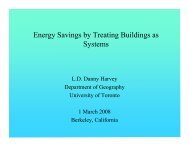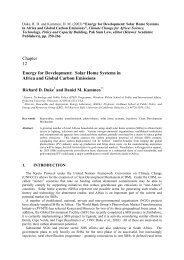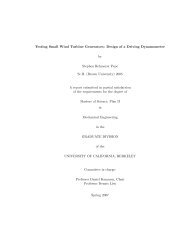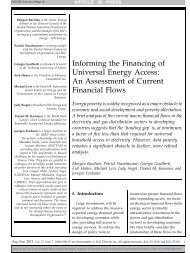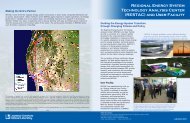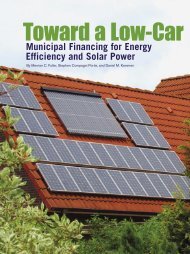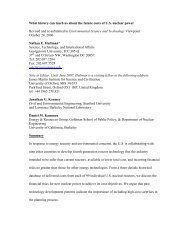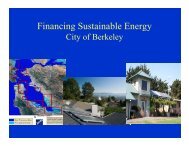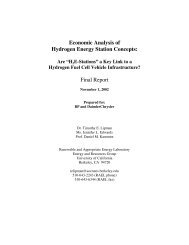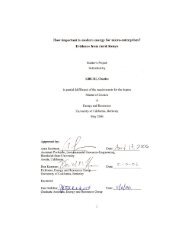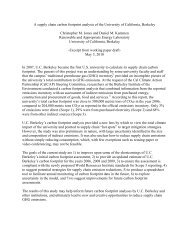Renewable Energy Sector Development in the Caribbean: Current ...
Renewable Energy Sector Development in the Caribbean: Current ...
Renewable Energy Sector Development in the Caribbean: Current ...
Create successful ePaper yourself
Turn your PDF publications into a flip-book with our unique Google optimized e-Paper software.
Figure 1 Domestic Retail Electricity Rates <strong>in</strong> <strong>Caribbean</strong> Islands (CARILEC, 2010)In response <strong>the</strong> <strong>Caribbean</strong>’s power supply sector is currently witness<strong>in</strong>g important changes <strong>in</strong> itsenergy regulatory framework. Governments and utility companies are also mak<strong>in</strong>g firm stridestowards renewable energy deployment – ano<strong>the</strong>r approach to address<strong>in</strong>g <strong>in</strong>dependence andsecurity. There are a number of energy policy reports such as <strong>the</strong> CREDP <strong>Caribbean</strong> <strong>Energy</strong>Policy 2007 (Loy, 2007) and <strong>the</strong> Organization of American States’ (OAS) Susta<strong>in</strong>able <strong>Energy</strong>Policy Initiative Report for Lat<strong>in</strong> America and <strong>the</strong> <strong>Caribbean</strong> 2007 (CARICOM, 2007) thatregional development agencies have developed to support this end. Never<strong>the</strong>less <strong>the</strong>re are anumber of barriers that h<strong>in</strong>der <strong>the</strong> advancement of renewable <strong>in</strong>tegration (Mitchell, et al., 2011).In this study we highlight four prom<strong>in</strong>ent advancements be<strong>in</strong>g made by both public utilitycompanies and <strong>in</strong>dependent energy companies <strong>in</strong> both utility and distribution scale technologywith<strong>in</strong> <strong>the</strong> <strong>Caribbean</strong>. We explore <strong>the</strong> history of utility ownership and current operations as wellas <strong>the</strong> history of regulatory bodies and <strong>the</strong>ir <strong>in</strong>teractions with utilities to create a picture of trends<strong>in</strong> <strong>the</strong> energy landscape. We learn that <strong>the</strong>re are <strong>in</strong> fact a number of differences between <strong>the</strong>structures and operations of various national power sectors <strong>in</strong> <strong>the</strong> region with regard toprivatization, regulatory oversight and government <strong>in</strong>volvement. Sensitivity to <strong>the</strong>se nuances isimportant and may be an important part of regional policy framework creation.2. CASE STUDIESGrenada, Barbados, Jamaica and <strong>the</strong> Ne<strong>the</strong>rland Antilles are <strong>the</strong> <strong>Caribbean</strong> islands that havebeen selected for study based on <strong>the</strong> fact that <strong>the</strong>y represent progressive islands <strong>in</strong> <strong>the</strong> regionwith regard to renewable energy developments. These islands def<strong>in</strong>e a spectrum of populationsize, <strong>in</strong>dustrialization, economic complexity, energy demand, government <strong>in</strong>volvement andutility cooperation (see Table 1).2



